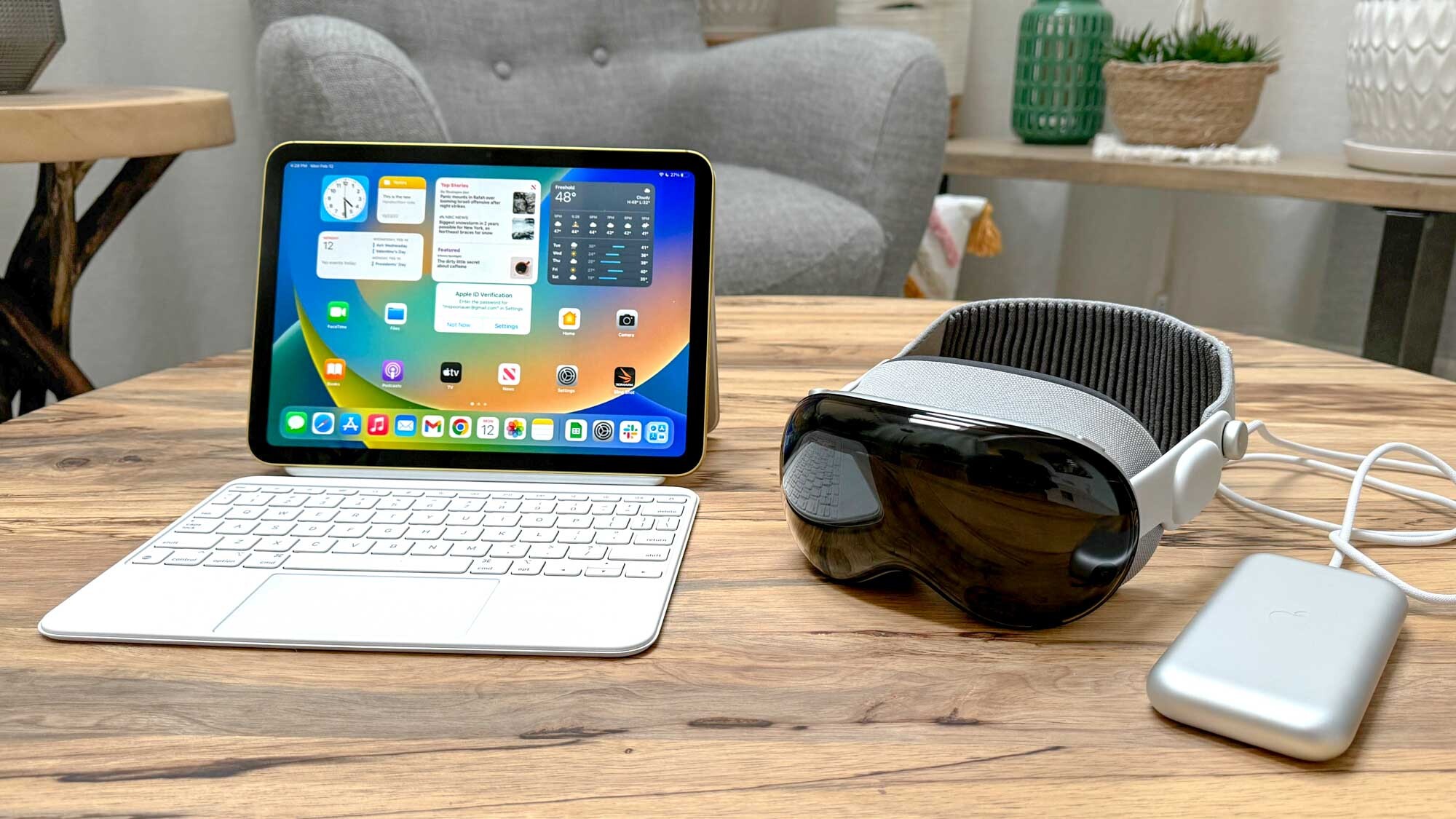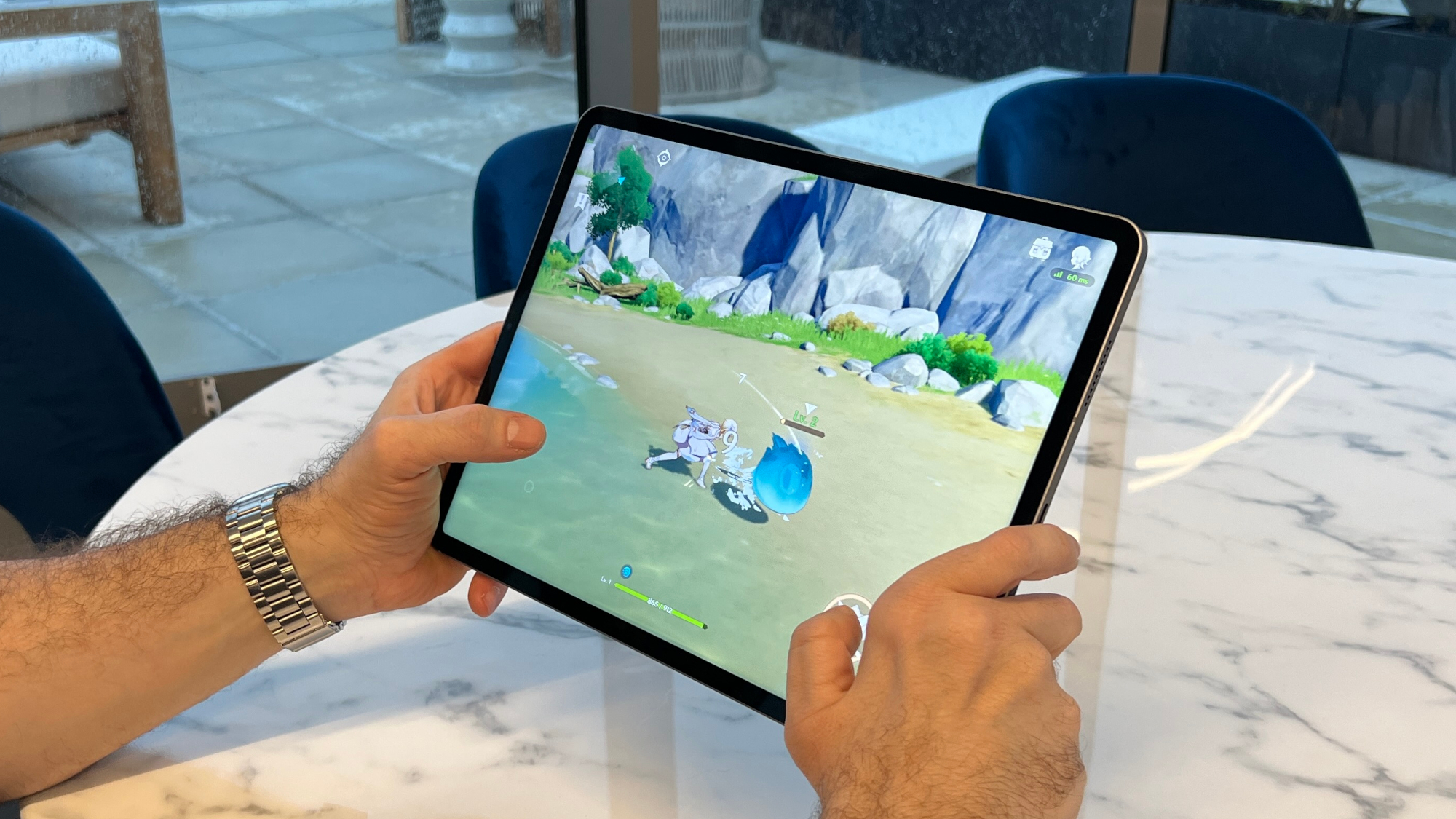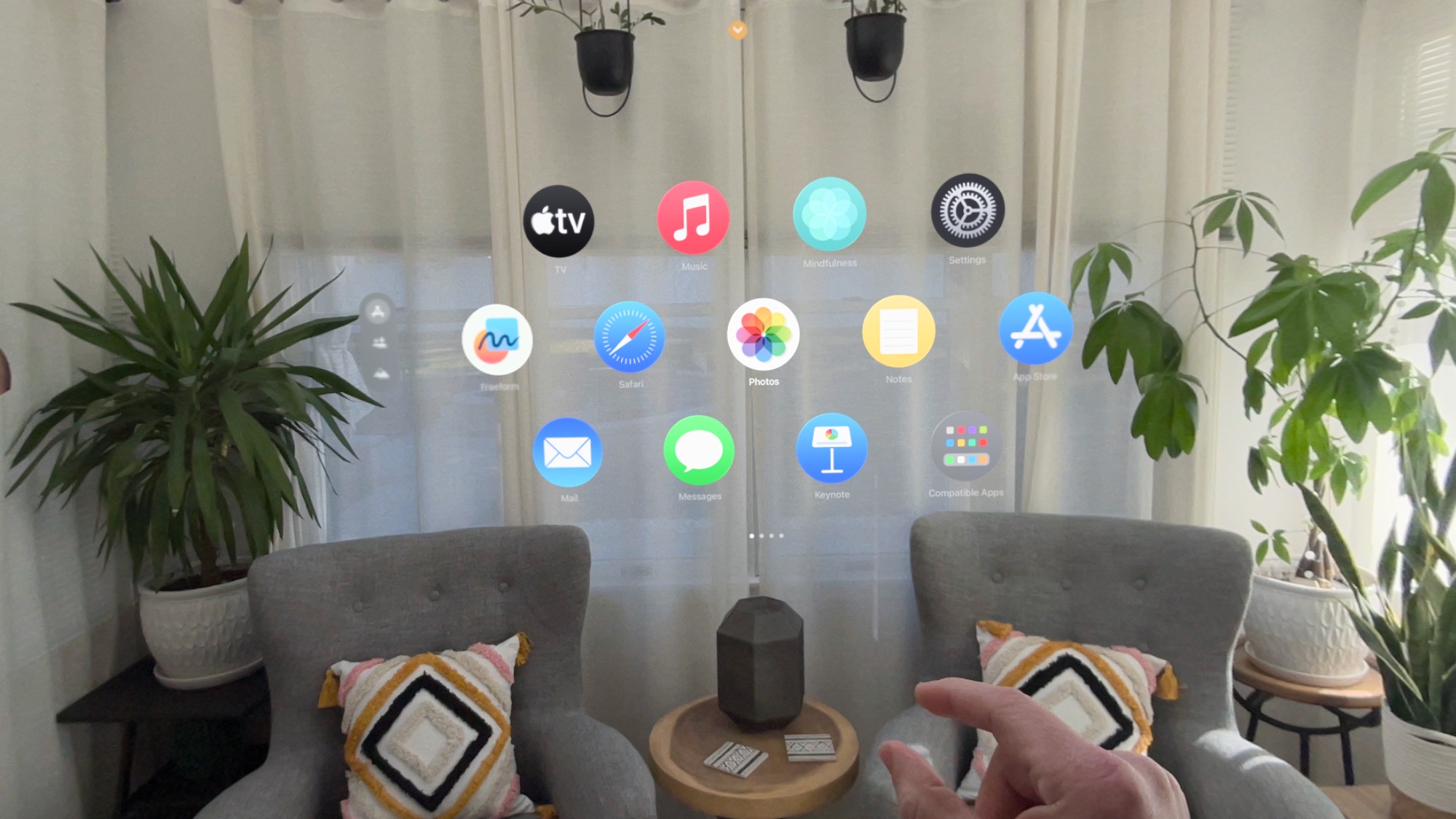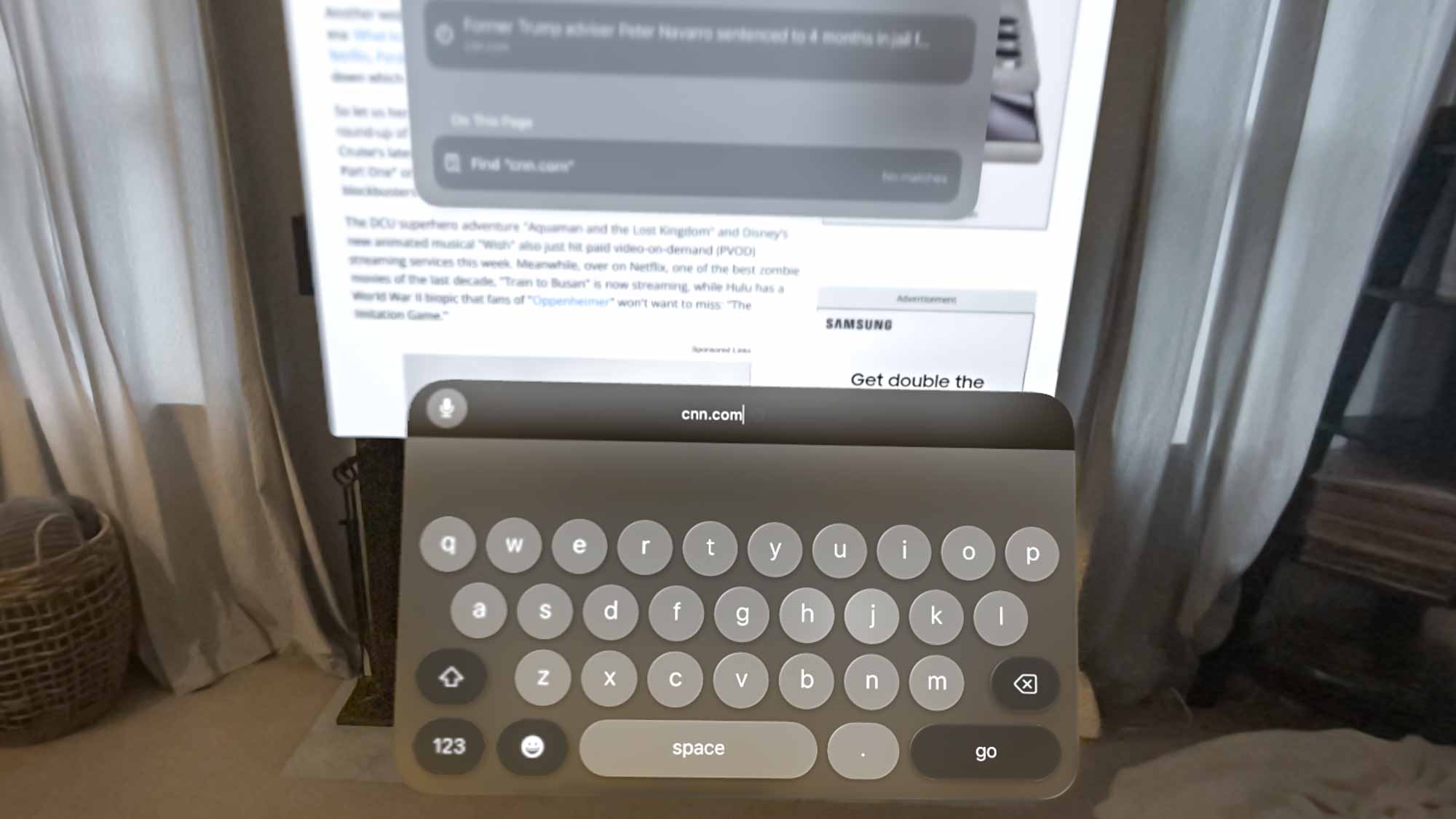No, Apple Vision Pro won’t kill the iPad — here’s why
The Apple Vision Pro won't cannibalize iPad sales

Could the Apple Vision Pro eventually kill the iPad? That might sound like a strange question considering the differences between these devices. However, this is a topic that Bloomberg reporter and Apple tipster Mark Gurman discussed in his recent Power On newsletter. Though Gurman says this won't happen any time soon, he brings up some compelling points.
The iPad has lost some of its simplicity. Initially, the device was effectively a giant iPhone containing the latter’s great features. In recent years, Apple has tried to make iPads into pseudo-MacBooks thanks to peripherals like the Apple Magic Keyboard and programs like Final Cut Pro. However, even the best iPads can’t compare to the best MacBooks in terms of overall usability. iPadOS just isn’t as robust as macOS.
Like iPads, the Apple Vision Pro allows you to stream videos, send emails and perform light work-related tasks. The spatial computing device can also act as an external monitor for the best MacBooks. Gurman says that due to these reasons, Apple Vision Pro could one day cannibalize iPad sales since the headset can perform most of the same tasks as the tablet.
While Gurman’s logic is sound, I don’t think Apple Vision Pro will ever make the iPad line less appealing. Sure, these machines can do many of the same things, but they’re fundamentally different experiences. Even if future iterations of Apple’s headset make it more comfortable to wear or have improved battery life, I doubt it will make iPads less relevant.
Distinct user experiences

iPads excel as portable devices for watching videos, reading digital books and for light workloads. The Vision Pro can do all of that, and do so in immersive virtual environments. That alone might make the iPad with its single display seem less appealing in comparison, but we have to take the overall user experience into account.
I recently tried the Apple Vision Pro and now consider it one of the best VR headsets I’ve ever placed on my head. The fact I can use hand gestures instead of controllers is a huge game changer — along with the sharp picture quality, excellent audio and surprisingly good comfort despite the heft. That said, just because it’s arguably the best headset out there doesn’t automatically make it more desirable than the best tablets.
I mostly use iPads to read novels/comics and to watch YouTube. Doing the latter on the Vision Pro could be more engaging than on an iPad because of the immersive field of view and solid speakers. However, I wouldn’t want to read books on a Vision Pro. I’m sure I could, but like folks who read physical books, I enjoy holding something in my hands when reading. There’s a reason I refuse to read books on a monitor, after all. It’s just not pleasant.

Picking up a tablet to get stuff done also seems more efficient than strapping a device to your face for the same purpose. Also, a thin and light iPad is much easier to travel with than the big and bulky Vision Pro. And this might be the New Yorker in me, but I worry someone might snatch the Vision Pro if I'm using it in public. I don’t have that same concern with an iPad.
So even if the Apple Vision Pro can do almost anything an iPad can, it provides a vastly different user experience. In this regard, neither device’s existence hurts the other nor renders the other obsolete.
Huge price difference

Though iPads tend to cost more than the best Android tablets, they’re still relatively affordable devices. Slates like the iPad Air ($699), iPad mini ($499) and iPad 10 ($449) won’t exactly break the bank. The 11-inch iPad Pro M2 starts at $799, which is certainly pricey, but that’s still a sub-$1,000 device.
The most decked-out configuration of the 12.9-inch iPad Pro M2 (complete with the Magic Keyboard and Apple Pencil 2) can cost an eye-watering $2,877 on Apple’s website. That’s a price typical of the best computers and best gaming PCs. But even at its most expensive, an iPad Pro with all the trimmings still costs hundreds of dollars less than the $3,500 Apple Vision Pro.
You can argue that Vision Pro’s price makes sense given all the technology packed into the headset. Again, it’s an impressive device. However, if you’re on a budget or simply don’t want to blow an entire month’s salary on any piece of hardware, then the Vision Pro isn’t worth considering. However, the much much cheaper iPads are. The slates won’t engross you in vivid virtual worlds, but they also won’t punch a giant hole in your bank account.
Even if future versions of the Vision Pro drop in price, iPads will still likely be the more affordable option.
Bottom line
The Apple Vision Pro will no doubt improve over the coming years, as most Apple products tend to do. However, I don’t see any future model of the spatial computer undercutting the iPad line. Even if the devices let you perform many of the same tasks, the user experience is quite different — different enough that each can occupy its niche in the market.
More from Tom's Guide
Sign up to get the BEST of Tom's Guide direct to your inbox.
Get instant access to breaking news, the hottest reviews, great deals and helpful tips.

Tony is a computing writer at Tom’s Guide covering laptops, tablets, Windows, and iOS. During his off-hours, Tony enjoys reading comic books, playing video games, reading speculative fiction novels, and spending too much time on X/Twitter. His non-nerdy pursuits involve attending Hard Rock/Heavy Metal concerts and going to NYC bars with friends and colleagues. His work has appeared in publications such as Laptop Mag, PC Mag, and various independent gaming sites.
